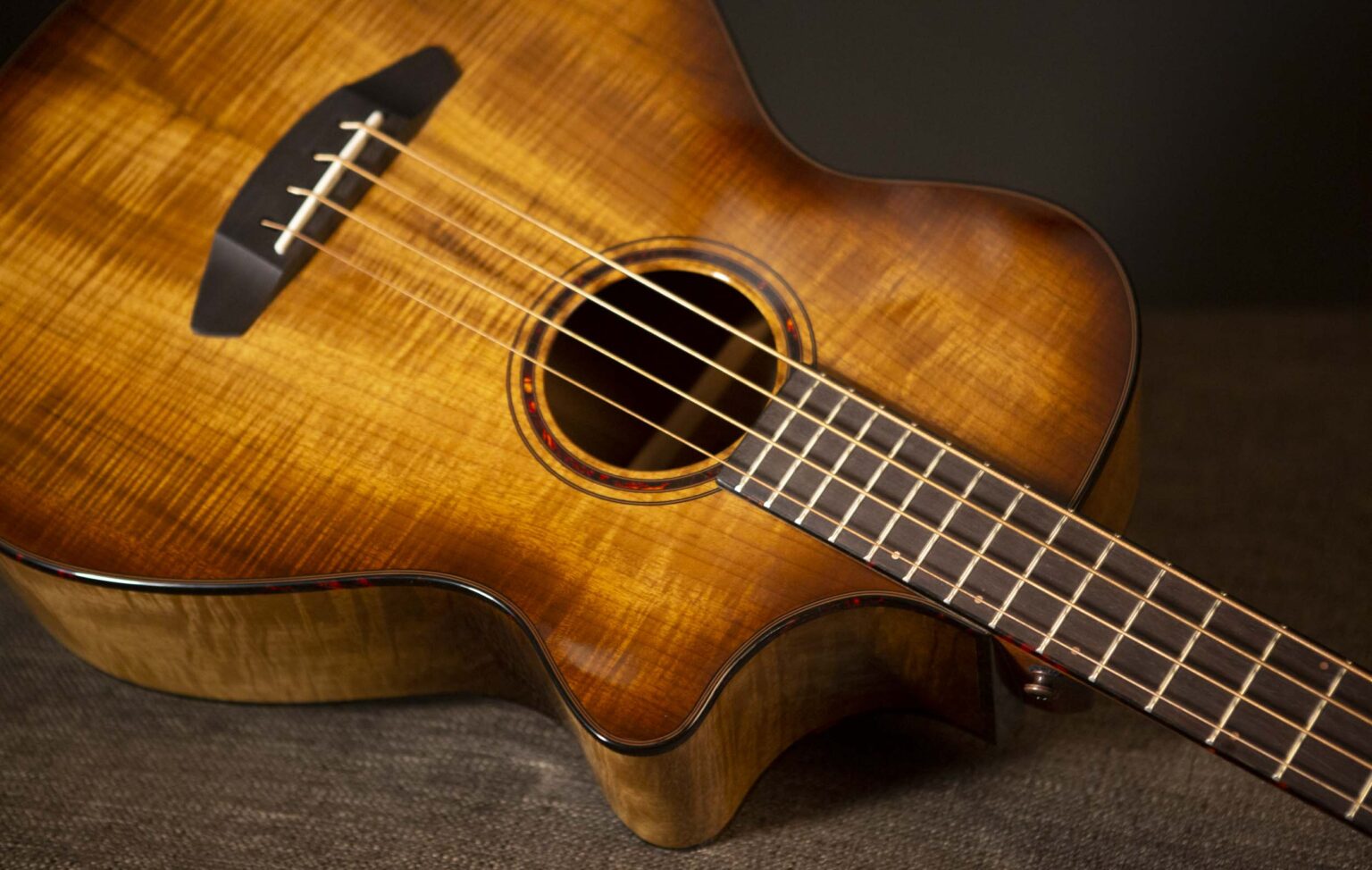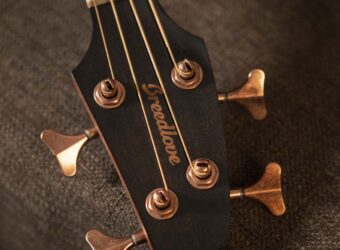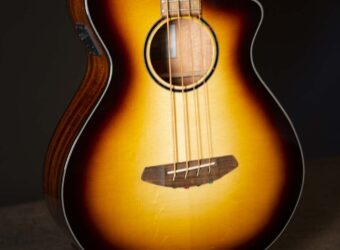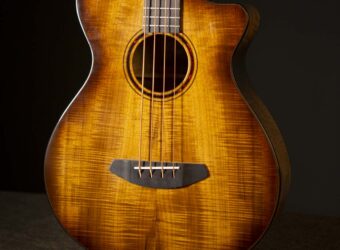
 The acoustic bass guitar is an interesting instrument. It’s a replacement for already an acoustic bass, the traditional upright. Its sound is unlike any other bass design out there. And, though designed to be played acoustically, it’s most often plugged in alongside other amplified instruments. Yet, despite its peculiarities, the acoustic bass guitar is an extremely popular instrument.
The acoustic bass guitar is an interesting instrument. It’s a replacement for already an acoustic bass, the traditional upright. Its sound is unlike any other bass design out there. And, though designed to be played acoustically, it’s most often plugged in alongside other amplified instruments. Yet, despite its peculiarities, the acoustic bass guitar is an extremely popular instrument.
Why? Let’s find out together.
History of the Acoustic Bass Guitar
To truly understand the acoustic bass guitar, we have to know where it came from and why. Some would point to the guitarrón, a deep-bodied, guitar-like acoustic instrument often played by Mariachi bands, as the origin. But, the acoustic bass guitar was actually created to solve a problem; the need for an acoustic bass instrument that was more convenient than an upright, and one that could be played by bassists not familiar with the traditional form of the instrument.
Much like Leo Fender’s Precision Bass, companies such as Kay in the 1950s and Ernie Ball in the 1970s paved the way with a bass crafted around well-established guitar designs. Springboarding off of flat-top acoustics, they enlarged the body, lengthened the neck, and added bracing to handle the increased string pull. The acoustic bass guitar has mainly remained the same ever since.
Acoustic Bass Guitars in Popular Culture
Though first released in the ’50s, the acoustic bass guitar became prominent with MTV’s iconic Unplugged series. From Krist Novoselic’s “Come As You Are” intro to KISS’s over-the-top production, and even Jay-Z and The Roots’ hip-hop adaptation of the format, the acoustic bass guitar was finally viewed as the pro-level instrument that it is.
Since then, many artists have placed the instrument front and center in concert and on their albums. Check out Red Hot Chili Peppers’ “Road Trippin,” Alice In Chains’ “Rotten Apple,” and, of course, Violent Femmes’ “Blister In the Sun.” And while Nathan East went electric for Eric Clapton’s Unplugged performance, he’s relied on his Yamaha 5-string acoustic bass guitar for Clapton’s live acoustic set ever since. You’ll even hear it on Iron Maiden’s “Journeyman.”
Why You Should Own an Acoustic Bass Guitar
It’s time to circle back to our original question, “Why is the acoustic bass so popular today?” The answer is two-fold:
- They sound great
- They are incredibly flexible and convenient
They sound great
Many bassists are struck when they first play an acoustic bass guitar. They don’t sound like an upright bass (Unless they have flatwound strings. More on this in a minute). They don’t sound like an electric bass guitar. Their voice is somewhere between an upright and a standard acoustic guitar. The result is shorter sustain, a clear fundamental, top-end detail, and a surprising amount of punch. You probably won’t record your next death metal album with one, but their sound is terrific in music where they have the sonic space to breathe.
They are incredibly flexible and convenient
The convenience side of these instruments is obvious. Would you rather travel to the gig with a full-size standup bass or one slightly bigger than a guitar? Because of this, acoustic bass guitars are ideal for grab-an-go gigs where their sound works.
Their flexibility is a different story. Because of their identifiable tone, it may surprise you how versatile these instruments are. Throw on a set of flatwound strings, and you have a convincing upright sound that fits great in small jazz combos. Grab a pick, and you’ll be amazed at how well rock bass lines translate. Accompanying a singer/songwriter in a coffee shop? Acoustic bass guitars’ wide frequency range fills out the music without stepping on the vocals. And have you heard the solo acoustic bass guitar pieces across YouTube? It’s as if the bass was made for the style.
The Problem with Acoustic Basses
While we can’t say enough good things about the acoustic bass guitar, the design does have one fundamental problem. They’re usually not very loud acoustically. Because of the energy it takes to amplify low frequencies, it’s tough to do so without the aid of electricity.
Builders have attacked this issue in many different ways over the years. From further enlarging the bass’ body to utilizing alternative materials, they’re constantly battling the physics of musical sound.
We think we’ve found the solution.
Breedlove Acoustic Bass Guitars
Breedlove always tries to honor traditional instrument building while improving the art form through innovation. That’s precisely what we’ve done with our acoustic bass guitars, and we’re thankful you have made them some of the most popular basses on the market.
We approach each of our models by considering three main elements:
- Wood
- Design
- Technology
Wood
Every Breedlove acoustic bass guitar features a solid wood top. This is essential to allow the instrument to vibrate and transmit energy to its fullest potential. Whether grabbing one of our Myrtlewood basses or going for a more traditional spruce/mahogany complement, we ensure each top is optimized for the sound of the bass.
We also utilize our proprietary EcoTonewood construction for the back and sides. The process adds a core of clear-cut free, individually harvested African mahogany to the lamination for increased projection, warmth, and detail.
Design
Our 32″ scale Concert and 34″ scale Concerto body styles further increase the instrument’s boldness and clarity. Each is carefully designed to accentuate the most desirable frequencies and deliver more power than their comfortable contours suggest.
Technology
We outfit every one of our acoustic bass guitars with our Breedlove Bridge Truss System. The system transfers the string pull and tension at the bridge to the bass’ heel block. Doing so lets the instrument’s top vibrate much more freely, which is essential to getting more volume.
The Low Down
We’ll say it again; the acoustic bass guitar is a weird instrument. As we’ve pointed out, it doesn’t have a traditional tone, and every note you play fights the laws of physics. But their versatility and convenience make them a staple of every bassist’s collection. And they sound so cool!
Acoustic bass guitars don’t always get the love they deserve. So we hope we’ve shed a little light on their qualities while convincing you to get one of your own. Don’t think of them as just a way to play funk tunes around a campfire (though they’re great for that). Think of them as their own thing and a new color to add to your low-end palette.





